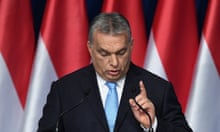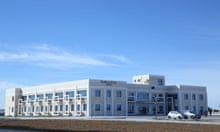More than three years after Europe’s biggest influx of migrants and refugees since the second world war, tensions between EU member states over how to handle irregular immigration from outside the bloc – mainly from the Middle East and Africa – remain high.
What is the scale of migration?
Numbers are sharply down from their 2015-16 peak because of a 2016 EU deal with Turkey, new border fences in the Balkans, and a 2017 bilateral arrangement between Italy and Libya, but tens of thousands of people are still trying to reach Europe.
The UNHCR says Spain has taken in 56,200 irregular migrants arriving by sea so far this year, Greece 28,700 and Italy 22,500. Overland arrivals in Greece have climbed sharply to 14,000, a three-fold increase on the same period last year.
The underlying factors that have led to more than 1.8 million migrants coming to Europe since 2014 have not gone away; most observers believe it is only a matter of time before the number of arrivals picks up significantly once more.
Why is it a problem?
Everyone agrees Europe needs to urgently overhaul its asylum and immigration rules. At present Spain, Italy and Greece take most of the strain owing to their geographical position on the Mediterranean Sea and the fact that, under EU law, asylum seekers must lodge their applications in the first EU country they enter.
However, no one can agree on what to do: some countries want tougher external border controls, others fairer distribution of new arrivals. Any solution will have to balance the concerns of “frontline” southern states with those of wealthier northern “destination” states, while dealing with the refusal of hardline central and eastern ones (such as Hungary and Poland) to accept any migrants at all.
What is the wider political context?
With anti-immigration sentiment on the rise across the continent, the presence in Italy’s government of the far-right League party of Matteo Salvini, which campaigned on a pledge to send 500,000 irregular migrants home, is making itself felt. The similarly rightwing, populist Freedom party is sharing power in Austria.
In Germany – which welcomed more than 1 million migrants in 2015 under Angela Merkel’s open-door policy – the rightwing Alternative für Deutschland (AfD) party has kept immigration firmly at the top of the political agenda. After a series of electoral setbacks, the chancellor has said she will not stand again. Polling shows immigration and terrorism remain EU citizens’ top concerns.
Where do things stand?
The death toll on the central Mediterranean route to Italy has fallen in the past year, but the number of those drowning as a proportion of arrivals has risen sharply to 2,054 so far this year, according to the International Organisation for Migration.
Amid a string of high-profile cases of migrant rescue boats left drifting at sea, NGO vessels have all but disappeared from the main migration routes to Italy following Salvini’s announcement after taking office this summer that he was closing Italian ports to non-Italian rescue vessels.
European leaders papered over their divisions at a crunch summer summit but have so far dodged any formal agreement on refugee quotas, with central states rejecting any form of mandatory action.
What will happen now?
Merkel is on record as saying the future of the European Union hinges on whether it can find answers to the “vital questions” posed by migration, but although leaders agree on the need to ease the burden on Italy and Greece, details are scarce.
Efforts will be shared, but only voluntarily. Members are to take in rescued migrants and establish centres to assess asylum claims on their soil, and the bloc will explore regional processing platforms in Algeria, Egypt, Libya, Morocco, Niger and Tunisia.
But so far none of these countries have agreed to help, while a couple have ruled themselves out. Meanwhile Hungary’s leader, Viktor Orbán, is leading a call among some states for a “strong border” to stop an “invasion”. Nothing is yet settled.










